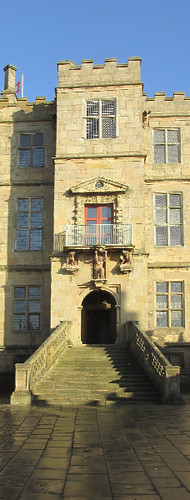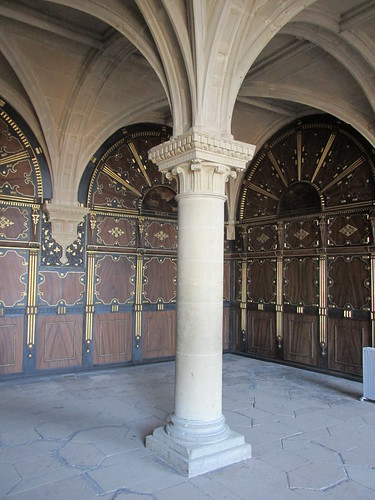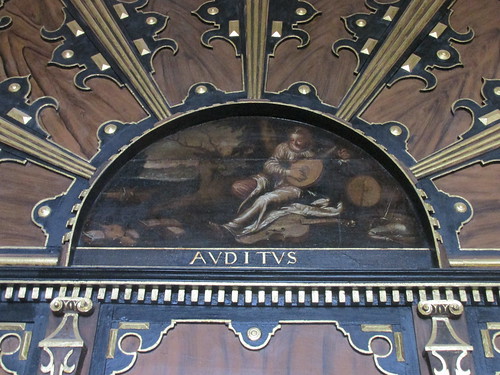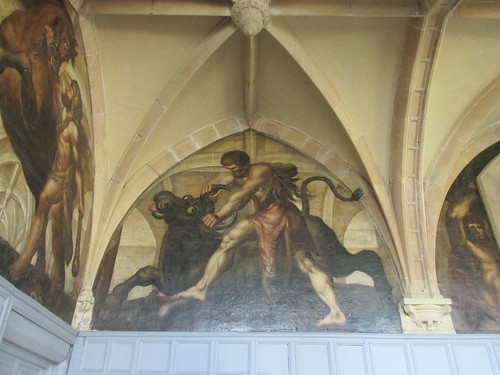Visit the town of Hucknall in Nottinghamshire and you can't help but notice that a certain "mad, bad and dangerous to know" poet used to live in the area. There's at least one Byron coffee bar, there's a statue of him on the front of a local shop, and you'll find his grave in the church yard.
However, if you wander around the corner you'll find a rather larger monument, surrounded by an iron railing.
Beneath the sod (as they say on a few Victorian headstones) lie the remains of one Ben Caunt, a bare knuckle fighter who rose to the giddy heights of Champion of England. He was born in Hucknall but moved around the country fighting various opponents.
He eventually settled in London where he became the landlord of the Coach and Horses pub in St Martin's Lane. (Which was destroyed by a fire in 1851, killing his two children, who are buried with him.)
At 6 feet 2 inches and 18 stone, Caunt became known as "Big Ben" and there is at least one claim that he passed on the name to the large bell in the tower at the Houses of Parliament. There's no documentary evidence to back up the claim, and other Benjamins have been linked to the title. But it's a nice idea that the original Big Ben is buried a very long way from London.
Thursday, 30 March 2017
Wednesday, 1 March 2017
Bolsover Castle
On a recent misty day we took a trip up the M1 to north Derbyshire and Bolsover Castle. Unlike many similar structures, it is genuinely right in the heart of the town.
In 1617 William Cavendish, who was to become the First Duke of Newcastle, inherited Bolsover Castle from his father Charles.
Charles died in the middle of creating the Little Castle, a mock Norman keep intended to act as a retreat from the family seat at Welbeck a few miles away. William continued work on the site, completing a range of luxurious interiors depicting life from earthly pursuits to heavenly wonders.
William employed architect Robert Smythson, who was also responsible for the design of William's later home, Hardwick Hall, and Longleat House, now home of the Marquis of Bath.
Bolsover's Little Castle was the perfect place to hold lavish parties and to impress visitors with its exquisite detail. Elaborately carved fireplaces, Italian-inspired stonework and richly decorated panelling combined to show off the host's taste and fortune.
Guests entered through a Gothic doorway and into an ante room which was decorated with brightly painted panels.
Banquets and dinner parties were held in the Pillar Parlour, which gets its name from a central pillar formed by its arched ceiling. The panelling is decorated with faux graining and gilding, and at the focus of each arch the panels contain a painted illustration of one of the five senses.
The grand hall is decorated with paintings that depict the labours of Hercules.
They are designed to create an illusion of additional space because they incorporate pictures of the ceiling vaulting.
Perhaps the most impressive room on the upper floors is the Star Chamber, the main room used by the castle owners. Only family and very close friends would have been invited to see it. Again the panelling is richly decorated and English Heritage, which now manages Bolsover, has restored almost all of the paintings. Two have been left to show the actual state of the originals. The restored ceiling is wondrous.
In 1617 William Cavendish, who was to become the First Duke of Newcastle, inherited Bolsover Castle from his father Charles.
Charles died in the middle of creating the Little Castle, a mock Norman keep intended to act as a retreat from the family seat at Welbeck a few miles away. William continued work on the site, completing a range of luxurious interiors depicting life from earthly pursuits to heavenly wonders.
William employed architect Robert Smythson, who was also responsible for the design of William's later home, Hardwick Hall, and Longleat House, now home of the Marquis of Bath.
Bolsover's Little Castle was the perfect place to hold lavish parties and to impress visitors with its exquisite detail. Elaborately carved fireplaces, Italian-inspired stonework and richly decorated panelling combined to show off the host's taste and fortune.
Guests entered through a Gothic doorway and into an ante room which was decorated with brightly painted panels.
Banquets and dinner parties were held in the Pillar Parlour, which gets its name from a central pillar formed by its arched ceiling. The panelling is decorated with faux graining and gilding, and at the focus of each arch the panels contain a painted illustration of one of the five senses.
The grand hall is decorated with paintings that depict the labours of Hercules.
They are designed to create an illusion of additional space because they incorporate pictures of the ceiling vaulting.
Perhaps the most impressive room on the upper floors is the Star Chamber, the main room used by the castle owners. Only family and very close friends would have been invited to see it. Again the panelling is richly decorated and English Heritage, which now manages Bolsover, has restored almost all of the paintings. Two have been left to show the actual state of the originals. The restored ceiling is wondrous.
Subscribe to:
Posts (Atom)







